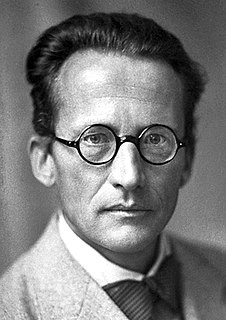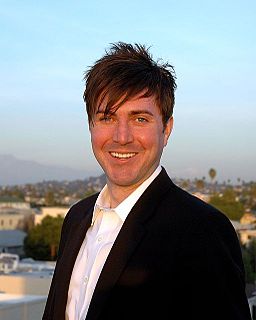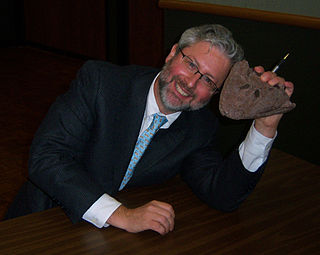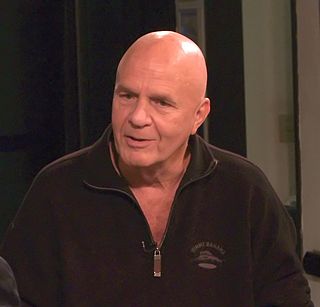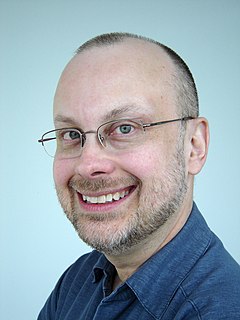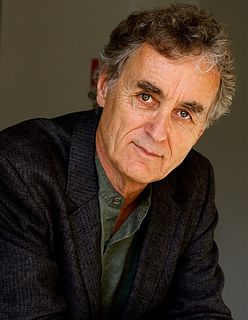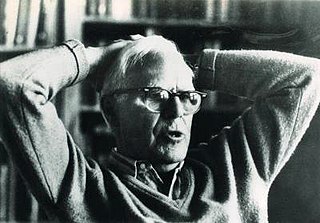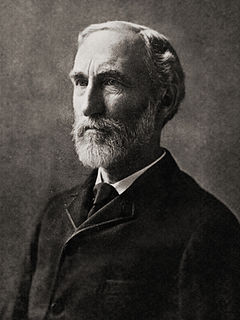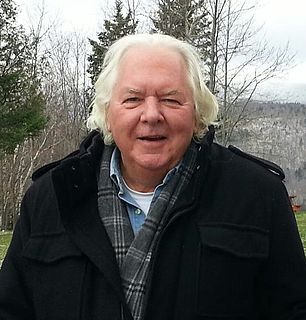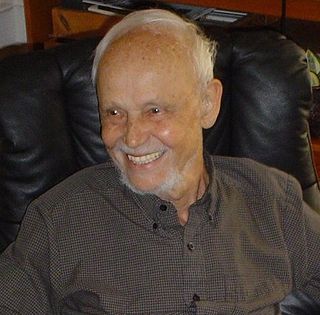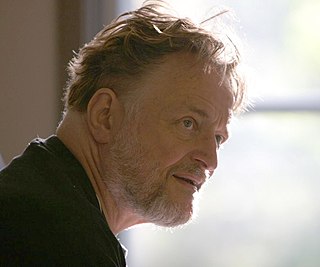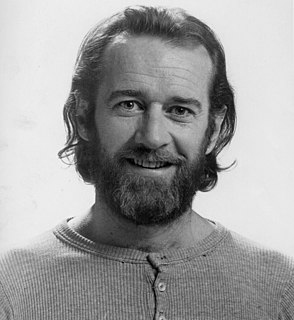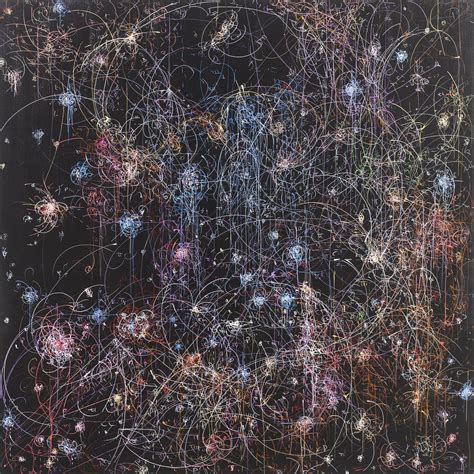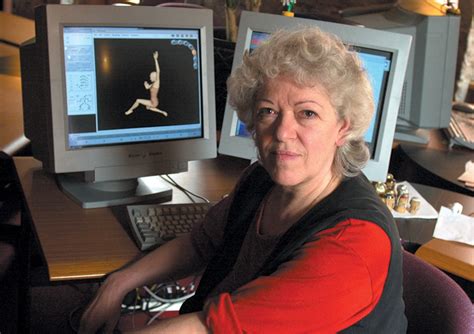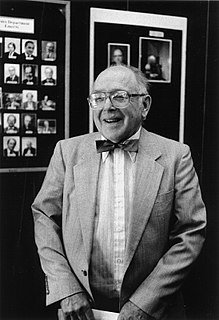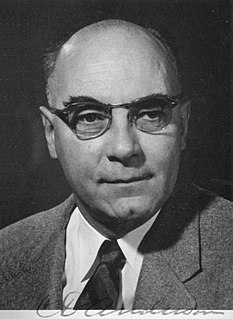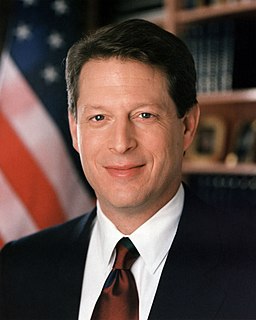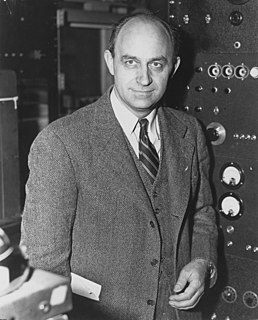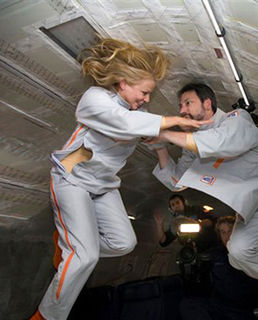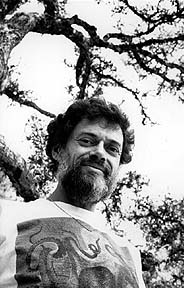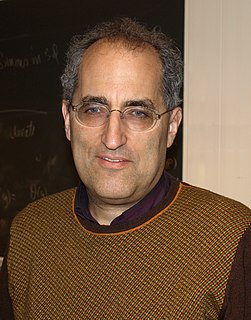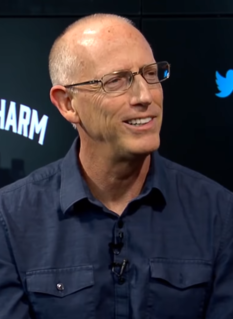Top 314 Subatomic Particles Quotes & Sayings
Explore popular Subatomic Particles quotes.
Last updated on November 25, 2024.
It is seen that both matter and radiation possess a remarkable duality of character, as they sometimes exhibit the properties of waves, at other times those of particles. Now, it is obvious that a thing cannot be a form of wave motion and composed of particles at the same time - the two concepts are too different.
The universe is random. It's not inevitable. It's simple chaos. It's subatomic particles in endless, aimless collision. That's what science teaches us, but what is this saying? What is it telling us, when on the very night that this man's daughter dies, it's me who's having a drink with him? How can that be random?
Through experiments over the past few decades physicists have discovered matter to be completely mutable into other particles or energy and vice-versa and on a subatomic level, matter does not exist with certainty in definite places, but rather shows 'tendencies' to exist. Quantum physics is beginning to realise that the Universe appears to be a dynamic web of interconnected and inseparable energy patterns. If the universe is indeed composed of such a web, there is logically no such thing as a part. This implies we are not separated parts of a whole but rather we are the Whole.
The body is made up of atoms and subatomic particles that are moving at lightning speed around huge empty spaces and the body gives off fluctuations of energy and information in a huge void, so essentially your body is proportionately as void as intergalactic space, made out of nothing, but the nothing is actually the source of information and energy.
Entanglement can best be understood as this: When subatomic matter is in a process together, subsequently the subatomic particles go apart from each other and go across the universe. When they do this, they will remain entangled. That means if you do something to one, the other one responds immediately, instantaneously.
Each galaxy, star, or person is the temporary owner of particles that have passed through the births and deaths of entities across vast reaches of time and space. The particles that make us have traveled billions of years across the universe; long after we and our planet are gone, they will be a part of other worlds.
I kissed him, trying to bring him back. I kissed him and let my lips rest against his so that our breath mingled and the tears from my eyes became salt on his skin, and I told myself that, somewhere, tiny particles of him would become tiny particles of me, ingested, swallowed, alive, perpetual. I wanted to press every bit of me against him. I wanted to will something into him. I wanted to give him every bit of life I felt and force him to live.
The standard model of particle physics says that the universe consists of a very small number of particles, 12, and a very small number of forces, four. If we're correct about those 12 particles and those four forces and understand how they interact, properly, we have the recipe for baking up a universe.
The last level of metaphor in the Alice books is this: that life, viewed rationally and without illusion, appears to be a nonsense tale told by an idiot mathematician. At the heart of things science finds only a mad, never-ending quadrille of Mock Turtle Waves and Gryphon Particles. For a moment the waves and particles dance in grotesque, inconceivably complex patterns capable of reflecting on their own absurdity.
The laws of thermodynamics, as empirically determined, express the approximate and probable behavior of systems of a great number of particles, or, more precisely, they express the laws of mechanics for such systems as they appear to beings who have not the fineness of perception to enable them to appreciate quantities of the order of magnitude of those which relate to single particles, and who cannot repeat their experiments often enough to obtain any but the most probable results.
Science is a way of thinking much more than it is a body of knowledge. Its goal is to find out how the world works, to seek what regularities there may be, to penetrate to the connections of things-from subatomic particles, which may be the constituents of all matter, to living organisms, the human social community, and thence to the cosmos as a whole.
I think the Bible is completely inspired by God in its overall messages. But, for the people of those days to know what was going to happen 4,000 years later in a world of astronomy or subatomic particles. They didn't have access to the knowledge that we presently have about geology. So, we know now that the world was created many of billions of years ago, 13 or 14 billion years ago. As far as they knew, the earth was the center of the universe. They thought that stars were little twinkling things in the sky where as now we know stars are very distant and much larger than the earth.
Our natural state of being is in relationship, a tango, a constant state of one influencing the other. Just as the subatomic particles that compose us cannot be separated from the space and particles surrounding them, so living beings cannot be isolated from each other... By the act of observation and intention, we have the ability to extend a kind of super-radiance to the world.
Every subatomic interaction consists of the annihilation of the original particles and the creation of new subatomic particles. The subatomic world is a continual dance of creation and annihilation, of mass changing into energy and energy changing into mass. Transient forms sparkle in and out of existence, creating a never-ending, forever newly created reality.
Ancient wisdom and quantum physicists make unlikely bedfellows: In quantum mechanics the observer determines (or even brings into being) what is observed, and so, too, for the Tiwis, who dissolve the distinction between themselves and the cosmos. In quantum physics, subatomic particles influence each other from a distance, and this tallies with the aboriginal view, in which people, animals, rocks, and trees all weave together in the same interwoven fabric.
Now the smallest Particles of Matter may cohere by the strongest Attractions, and compose bigger Particles of weaker Virture.... There are therefore Agents in Nature able to make the Particles of Bodies stick together by very strong Attraction. And it is the Business of experimental Philosophy to find them out.
I'm not in show business because I don't have to go to the meetings, I'm just not a part of it, I don't belong to it. When you "belong" to something. You want to think about that word, "belong." People should think about that: it means they own you. If you belong to something it owns you, and I just don't care for that. I like spinning out here like one of those subatomic particles that they can't quite pin down.
There's stable subatomic particles - protons, neutrons, electrons - and then there's unstable ones that decay into stable ones. One will become many. There's this constant process of transformation that underlies everything in the entire universe. They also make these beautiful marks through time. It's like the universe was drawing, essentially, at this fundamental level. There's always an alphabet that's based in natural patterns. Sometimes they're just by themselves, sometimes they build up these other things that relate to the conception, that are more at our level of existence.
Mathematics is not only real, but it is the only reality. That is that entire universe is made of matter, obviously. And matter is made of particles. It's made of electrons and neutrons and protons. So the entire universe is made out of particles. Now what are the particles made out of They're not made out of anything. The only thing you can say about the reality of an electron is to cite its mathematical properties. So there's a sense in which matter has completely dissolved and what is left is just a mathematical structure.
Over the last century, physicists have used light quanta electrons, alpha particles, X-rays, gamma-rays, protons, neutrons and exotic sub-nuclear particles for this purpose. Much important information about the target atoms or nuclei or their assemblage has been obtained in this way. In witness of this importance one can point to the unusual concentration of scattering enthusiasts among earlier Nobel Laureate physicists. One could say that physicists just love to perform or interpret scattering experiments.
String theory?[pause] It closed the conceptual gulp between relativity and quantum mechanics. It postulates that subatomic particles are not points, but strings, about one planck length long. The rate at which strings vibrate can generate the properties of all known particles. Huh? How did I know that?
It seems probable to me that God, in the beginning, formed matter in solid, massy, hard, impenetrable, moveable particles, of such sizes and figures, and with such other properties, and in such proportions to space, as most conduced to the end for which He formed them; and that these primitive particles, being solids, are incomparably harder than any porous bodies compounded of them, even so very hard as never to wear or break in pieces; no ordinary power being able to divide what God had made one in the first creation.
We know little of the consequences of the geoengineering process, such as spraying particles into the atmosphere that shade the planet from the sun's rays and could decrease its temperature. But this process is how dinosaurs disappeared from the Earth about 60 million years ago, by particles spewed by a volcano or a giant meteorite impact, and our species could follow suit.
If one should give me a dish of sand, and tell me there were particles of iron in it, I might look for them with my eyes, and search for them with my clumsy fingers, and be unable to detect them; but let me take a magnet and sweep through it, and how would it draw to itself the almost invisible particles by the mere power of attraction. The unthankful heart, like my finger in the sand, discovers no mercies; but let the thankful heart sweep through the day, and as the magnet finds the iron, so it will find, in every hour, some Heavenly blessings.
Research at the subatomic quantum level reveals an invisible connection between all particles and all members of a given species. This oneness is being demonstrated in remarkable scientific discoveries. The findings show that physical distance, what we think of as empty space, does not preclude a connection by invisible forces. Obviously there exist invisible connections between our thoughts and our actions. We do not deny this, even though the connection is impervious to our senses.







